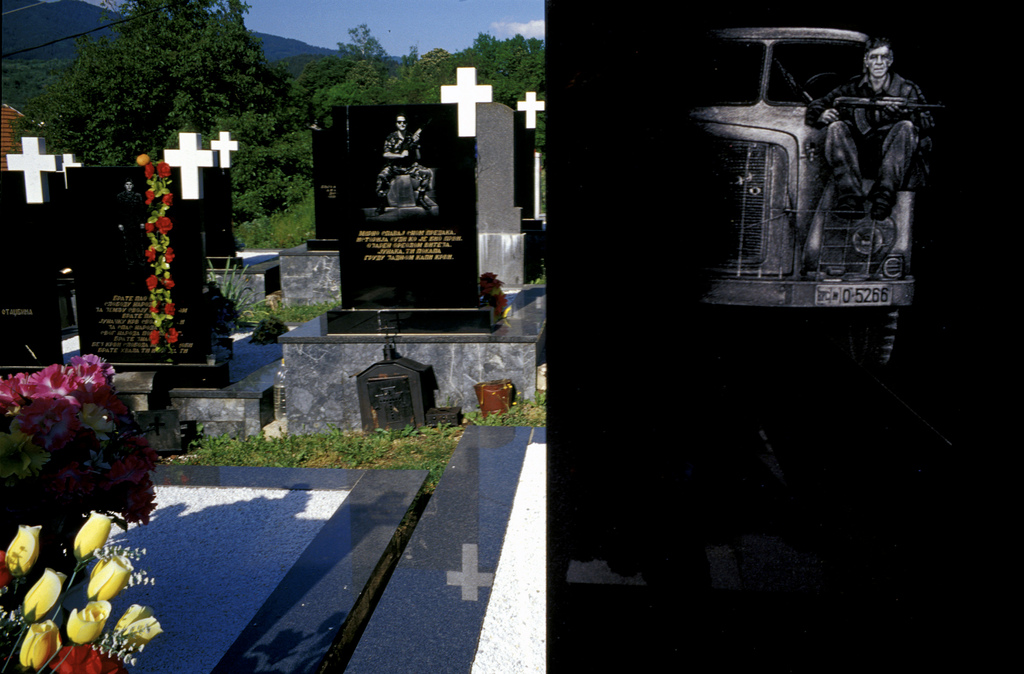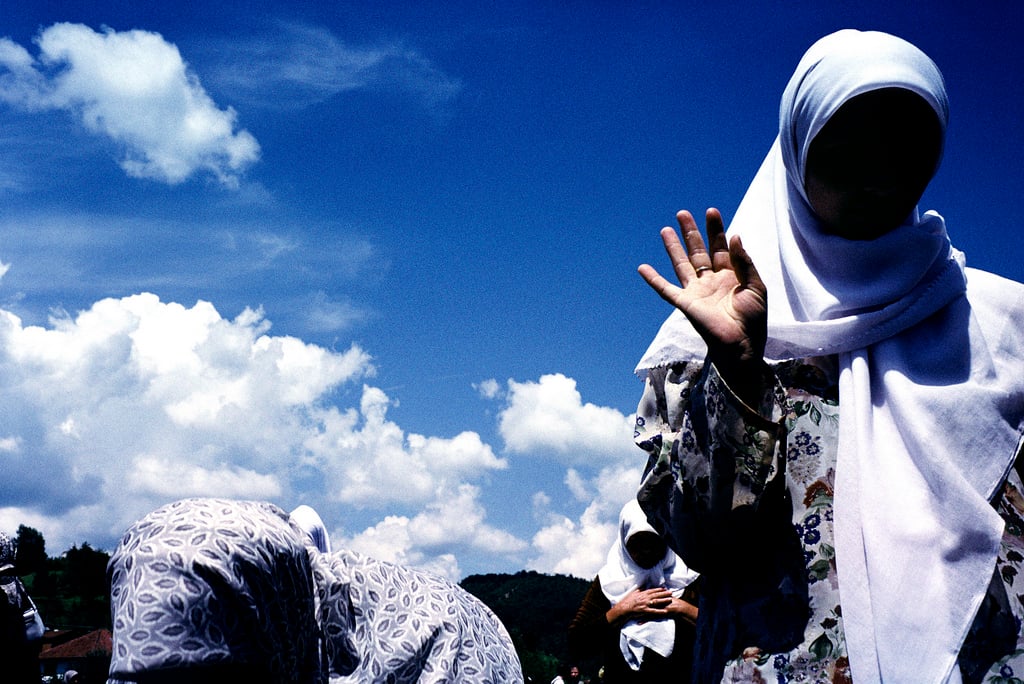 A Bosnian Muslim widow examines body bags containing the remains of recently exhumed victims of the 1992 “ethnic cleansing” campaign waged by Serbs against their Muslim neighbors (July 2001). Exhumations of mass graves began in 1996 and are expected to last for many years to come. Nearly 30,000 Bosnian Muslims—most of them civilians—were listed as missing at the end of the war; most are believed to have been victims of “ethnic cleansing.” Photo courtesy of Sara Terry and the Aftermath Project.
A Bosnian Muslim widow examines body bags containing the remains of recently exhumed victims of the 1992 “ethnic cleansing” campaign waged by Serbs against their Muslim neighbors (July 2001). Exhumations of mass graves began in 1996 and are expected to last for many years to come. Nearly 30,000 Bosnian Muslims—most of them civilians—were listed as missing at the end of the war; most are believed to have been victims of “ethnic cleansing.” Photo courtesy of Sara Terry and the Aftermath Project.This month marks the 19th anniversary of the Srebrenica Massacre in Bosnia, which has been called the worst crime on European soil since World War II. In “Bosnia’s Long Road to Peace,” artist Sara Terry, founder and director of the Aftermath Project, uses photography to educate the public about the true cost of war and the real price of peace in Bosnia.
 Laser-engraved headstones of Bosnian Serb soldiers who were killed during the war. The cemetery is in Visegrad, in eastern Bosnia, a town where some 2,000 Bosnian Muslim men and boys were killed by Serbs in the spring of 1992. Eight years after the end of the war, the former Muslim-majority town remains overwhelmingly Serb. Photo courtesy of Sara Terry and the Aftermath Project.
Laser-engraved headstones of Bosnian Serb soldiers who were killed during the war. The cemetery is in Visegrad, in eastern Bosnia, a town where some 2,000 Bosnian Muslim men and boys were killed by Serbs in the spring of 1992. Eight years after the end of the war, the former Muslim-majority town remains overwhelmingly Serb. Photo courtesy of Sara Terry and the Aftermath Project."I went to Bosnia with a desire to document the incredibly difficult period when humans move out of war’s desperate struggle to survive, and begin another equally mighty struggle – that of learning to live again," Terry says.
 Bosnian Muslim widows during the prayer for the dead offered at the groundbreaking of a memorial site for the 7,000 to 8,000 Bosnian men and boys who were massacred by Serb forces in 1995. Photo courtesy of Sara Terry and the Aftermath Project.
Bosnian Muslim widows during the prayer for the dead offered at the groundbreaking of a memorial site for the 7,000 to 8,000 Bosnian men and boys who were massacred by Serb forces in 1995. Photo courtesy of Sara Terry and the Aftermath Project.For more photos and video, see “Bosnia’s Long Road to Peace.” The collection is from "War is Only Half the Answer," an initiative of the Aftermath Project and Facing History. "War is Only Half the Answer" can help young people, teachers, and community members explore how photojournalists document the challenges of rebuilding communities after conflict. Check out Facing History's step-by-step guide to learn how to integrate these lesson plans in the classroom.

